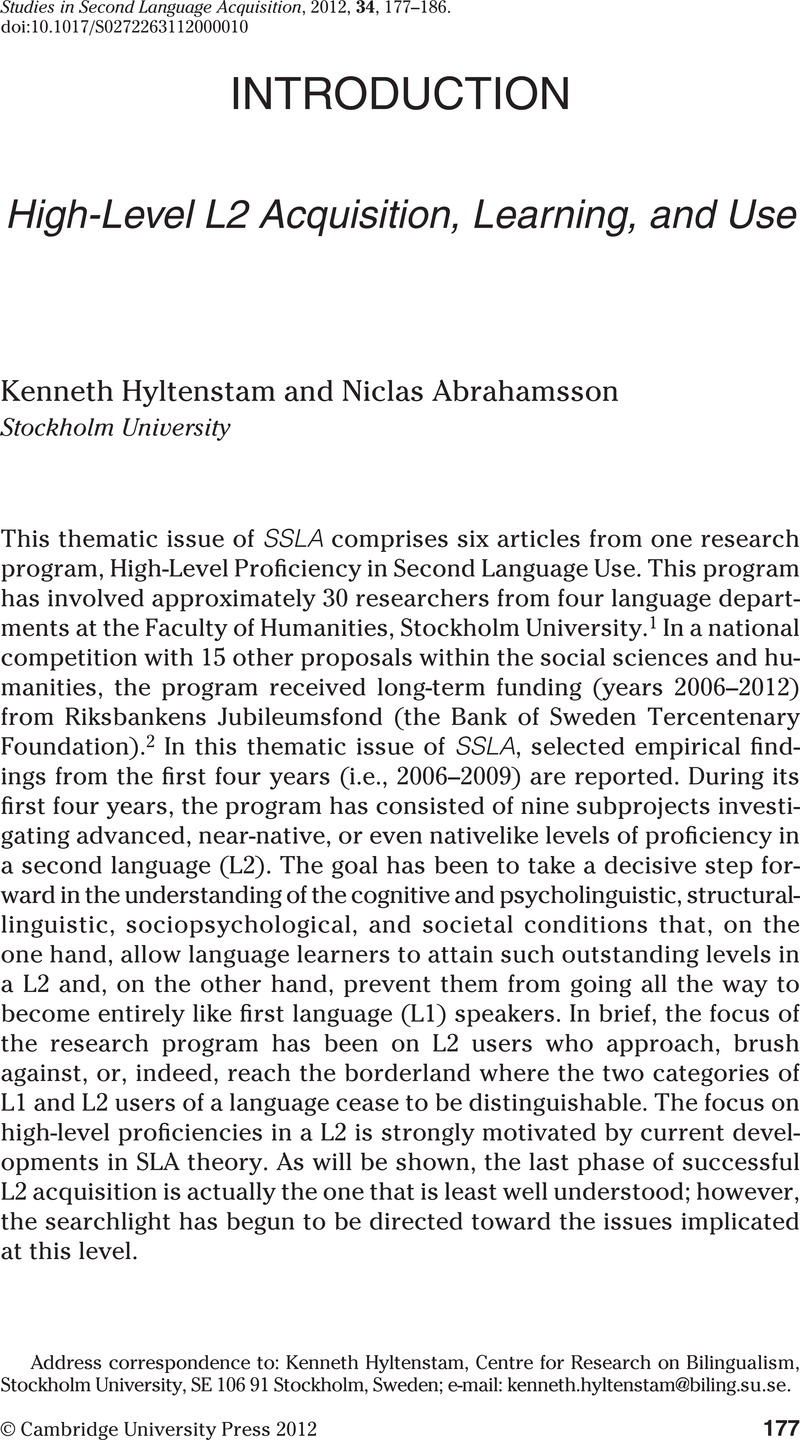Crossref Citations
This article has been cited by the following publications. This list is generated based on data provided by Crossref.
Godfrey, LeeAnne
Treacy, Corbin
and
Tarone, Elaine
2014.
Change in French Second Language Writing in Study Abroad and Domestic Contexts.
Foreign Language Annals,
Vol. 47,
Issue. 1,
p.
48.
Lahmann, Cornelia
Steinkrauss, Rasmus
and
Schmid, Monika S.
2016.
Factors Affecting Grammatical and Lexical Complexity of Long‐Term L2 Speakers’ Oral Proficiency.
Language Learning,
Vol. 66,
Issue. 2,
p.
354.
Pecorari, Diane
and
Malmström, Hans
2018.
At the Crossroads of TESOL and English Medium Instruction.
TESOL Quarterly,
Vol. 52,
Issue. 3,
p.
497.
Menke, Mandy R.
and
Malovrh, Paul A.
2021.
Advancedness in Second Language Spanish.
Vol. 31,
Issue. ,
p.
2.
van Koert, Margreet
Leona, Nihayra
Rispens, Judith
Tijms, Jurgen
Molen, Maurits van der
Grunberg, Hernán Labbé
and
Snellings, Patrick
2023.
English Grammar Skills in Dutch Grade 4 Children: Examining the Relation Between L1 and L2 Language Skills.
Journal of Psycholinguistic Research,
Vol. 52,
Issue. 5,
p.
1737.
Van Vu, Duy
2024.
Alene Moyer: The Gifted Language Learner: A Case Of Nature or Nurture?.
Applied Linguistics,
Vol. 45,
Issue. 1,
p.
194.





